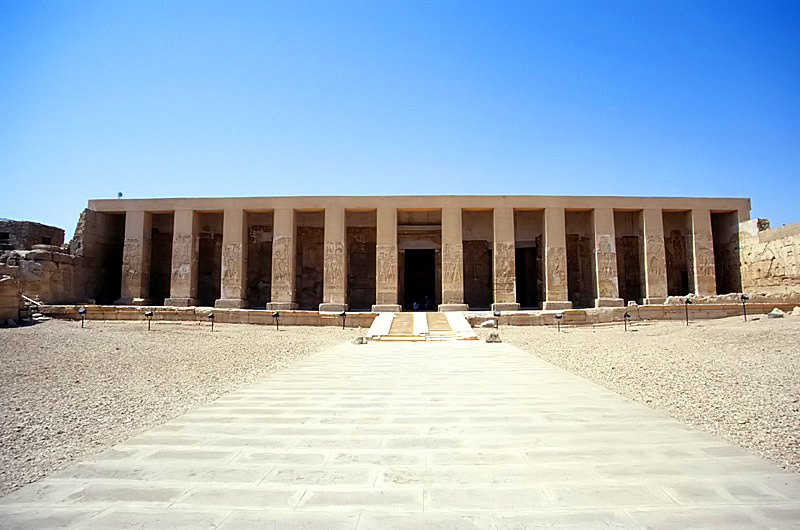Around 120 images of ancient Egyptian boats have been found inside a building in Abydos, Egypt.
The building dates back more than 3,800 years and was built close to the tomb of Pharaoh Senwosret III, report archaeologists at the site.
The series of images, or tableau as it is called, once looked upon a real boat that sat within the buildings walls states the leader of the excavation, Josef Wegner, a curator at the Penn Museum at the University of Pennsylvania.
The wooden boat is now more or less gone with only a few planks remaining. It would have been constructed at Abydos or built near water and then dragged across the desert. In ancient Egypt, boats were sometimes buried close to the Pharaoh’s tomb as part of their funerary rites. Archaeologists discovered the tableau on the white walls of the building.
Revealed: 3,800-year-old Egyptian ‘tableau’ may depict funerary boats that carried Pharaoh Senusret III to his tomb https://t.co/l6HGItjgpD
— HixenbaughAncientArt (@HixenbaughArt) November 5, 2016
Wegner wrote in an article published in the International Journal of Nautical Archaeology that the biggest images are almost 5 feet in length. They display large, well-rendered boats that depict rigging, sails, masts, deckhouse/cabins, oars, rudders, and in some cases, rowers. He also wrote that some of the images were simple and small; the smallest was about 4 inches in length.
Even though around 120 boat images survive today, there would have been more decorating the building walls during ancient times. In addition to the boats, the tableau had images of flowers, cattle, and gazelles.
“3,800-Year-Old ‘Tableau’ of Egyptian Boats Discovered” in a building near pharaoh Senwosret III’s tomb https://t.co/Vra1khWMCo#archaeology
— Dr. Carmen Obied (@CarmenObied) October 31, 2016
Close to the entranceway of the building, the interior of which is around 68 feet by 13 feet, archaeologists found more than 145 pottery ships, several of which are buried facing toward the building’s entrance.
The ships are necked, liquid storage jars called beer jars. They were most likely used for storage and transporting different kinds of liquids, according to Wegner in a journal article.
The existence of the building was first noted in 1904 by an Egypt Exploration Fund (EEF) team that worked at Abydos between 1901 and 1903. Since the team had no time to excavate the building, it had no clue what was inside.
3,800-Year-Old ‘Tableau’ of #Egyptian Boats Discovered https://t.co/u8SXPyCF9w pic.twitter.com/EBJilmwElf
— Live Science (@LiveScience) December 28, 2016
The findings are leaving archaeologists with many mysteries that future excavations might help solve. The archaeologists have no knowledge of who drew the tableau or why the images were created. Wegner told Live Science that they can’t answer that on the basis of what’s preserved. Yet, the researchers are thinking that multiple people created the tableau in a short period of time.
Another possibility is that the people who created the boat also made the tableau. Or perhaps it could have been a group of people taking part in a ceremony, after the passing of Pharaoh Senwosret III, that involved engraving the images onto the walls.
An additional possibility is that a gathering of people gained access to the building after the Pharaoh passed and made the tableau. Archaeologists have discovered that a group of individuals went into the building at some point after the Pharaoh’s passing and took the boat apart and reused the planks.
It’s also a mystery to the archaeologists as to the purpose of all the pottery that was found close to the entrance of the building. They believe that it’s possible that those that were attending the ceremony could have spilled liquid from the pots on the ground on purpose. Wegner also wrote in the paper that a potentially large pouring of liquid, mainly water, at the entrance of the building had been a way of magically floating the boat, although, of course, only figuratively and as part of a ceremony, MSN News reported.
3,800-Year-Old ‘Tableau’ of Egyptian Boats Discovered https://t.co/MalZ3XgEsc … #archaeology pic.twitter.com/ZlqVCGnOCO
— Irish Archaeology (@irarchaeology) November 6, 2016
One more possibility the archaeologists came up with is that a wooden boat was transported on a wooden sledge across the desert. If that was the case, water and other liquids might have been used to solidify and lubricate the ground along the path of the boat as it was pulled from the floodplain to its desert resting place. The ceramic ships used during this journey might themselves have taken on a ritual importance. Both the boat and jars were then buried together as a ceremonial entombment of items associated with royal mortuary rites.
The team is planning to carry out excavation in the future that will hopefully help solve various questions they have. Wegner’s team, with the cooperation of Egypt’s Ministry of State for Antiquities, started the excavation of the building between 2014 and 2016.
